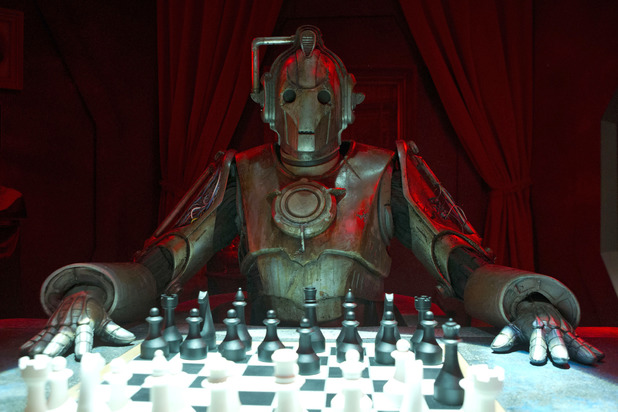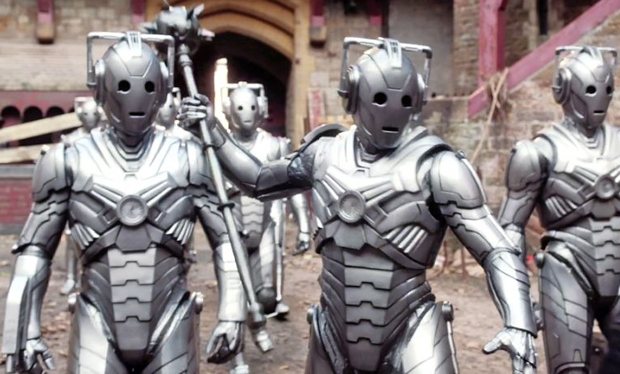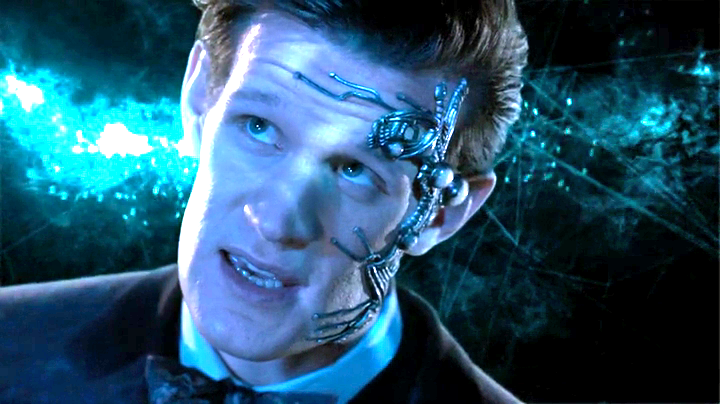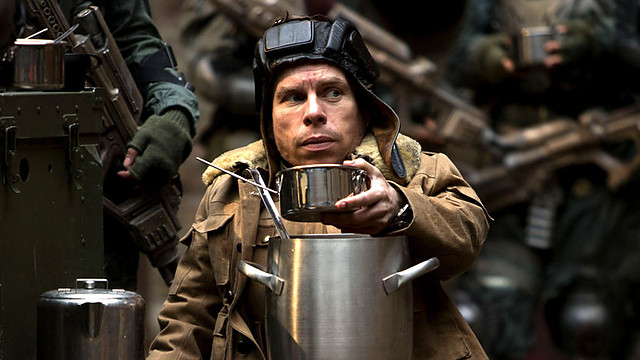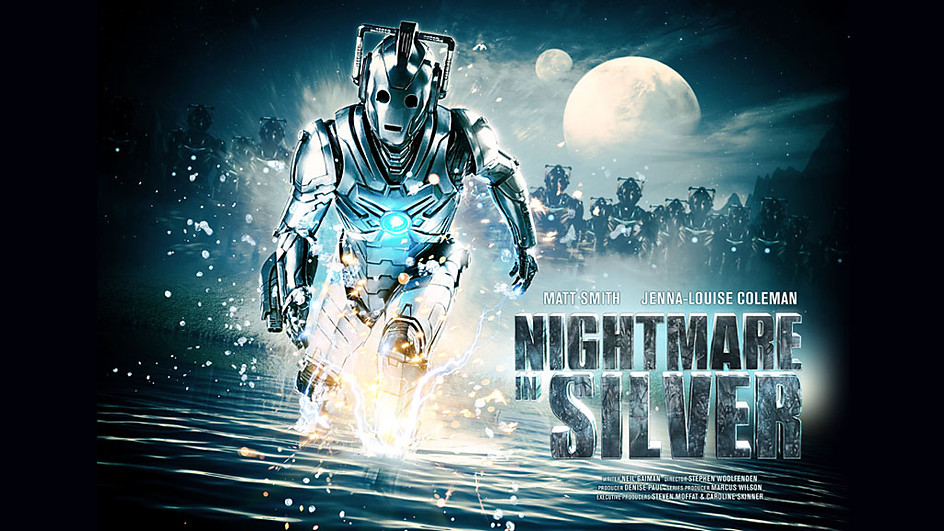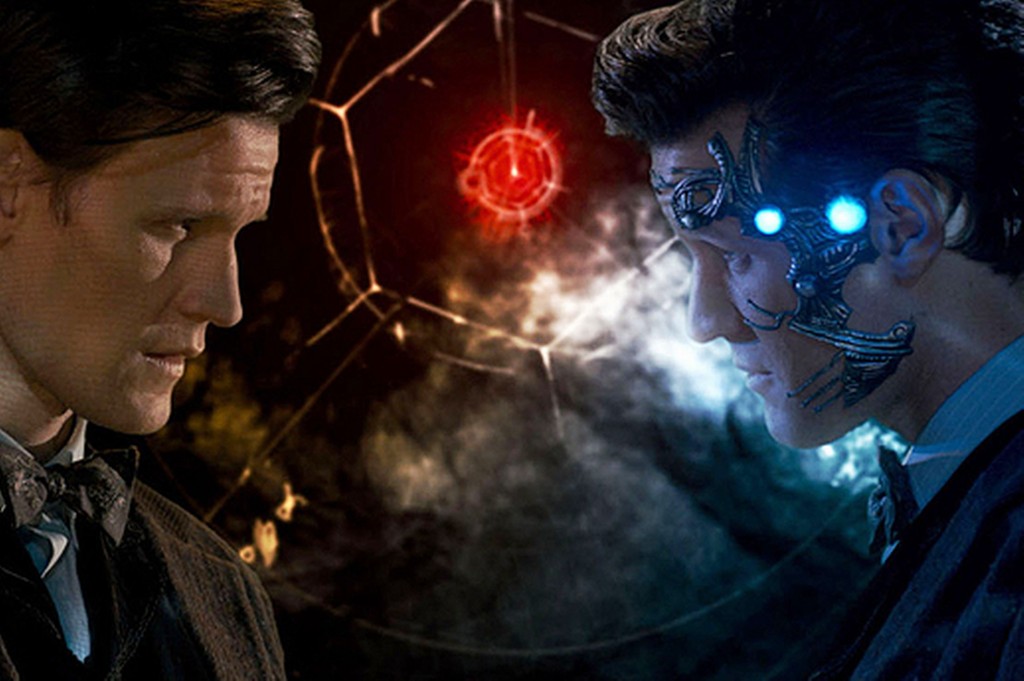 In our last review before the Series 7 finale, James Willets revisits ‘Nightmare in Silver’.
In our last review before the Series 7 finale, James Willets revisits ‘Nightmare in Silver’.
Don’t forget to download our new Moffat Bingo cards before tomorrow’s episode!
Neil Gaiman is rightly lauded as a titan of genre writing, the guy behind enduring classics like Sandman, Neverwhere, Stardust and Coraline. He’s written extensively for young adults and comics, and won numerous awards for his fiction.
It’s hard to overstate the impact Sandman had on me. It was one of the titles that first got me into comics – the gateway drug that drew me into the wider four colour world, back when I had a sneering disdain for the garish funny books from the big two. Without them I wouldn’t have discovered the world of non-cape comics; no V for Vendetta, no Transmetropolitan, no Y: The Last Man or Ex Machina or Walking Dead.
So it’s fair to say that I’m a little bit of a fan of Neil Gaiman. There are a lot of things that I really love that he turned me onto, not just the comics, but music as well (his recommendation of Jonathan Coulton led me to check out his songs – that culminated in me helping to kickstart his comics collaboration with Greg Pak).
As well as all the great books he’s written – some of which I used in lessons when I taught, some of which I still count as some of my favourite books of all time, all of which I try and pick up on release – well, on top of that he wrote one of the most enjoyable Doctor Who episodes of recent years, ‘The Doctor’s Wife’.
So as you can imagine, his follow-up, ‘Nightmare in Silver’, had a lot riding on it. Gaiman had to deliver on the promise of his last episode and the expectations that had sprung from that. Plus, making the Cybermen scary – a pretty difficult feat in itself.
Did he succeed? Not really, on either count. It certainly wasn’t as good as ‘The Doctor’s Wife’, but it seems a little unfair to set the standard so high. And the Cybermen weren’t significantly scarier, although I think they are better villains now than they were before.
So whilst I can’t honestly say I was blown away by it, and wouldn’t use it to try and introduce a sceptic to Doctor Who, I certainly won’t go as far as to call it a bad episode, or even just an average one. It was rather good, if unexpectedly Gaiman-esque; that is, in the style of Neil Gaiman, rather than the style of Doctor Who.
The formula itself was a nice change, adding Clara’s two charges as a child friendly view into the world of the Doctor. It’s surprising that it is so unusual though; one would assume that a show that is so ‘kid friendly’ would be more likely to feature more child characters, if not as companions then certainly as recurring allies. Those featured in previous episodes have tended to be focal points of the story, Deus Ex Machina plot enders, the weekly MacGuffin or just plain kidnap-bait.
Here, the presence of the kids helps to flesh out Clara’s character a little bit, although her enthusiasm for taking control of a penal squad soon outweighs her maternal instinct. Still, her interactions with the children, and specifically her refusal to abandon them to their fate, is what drives the episode and gives her a positive momentum that has been alluded to but never fully explored in previous episodes, most obviously in ‘The Rings of Akhaten’.
The kids themselves verge on the annoying. Weirdly, I found myself having more sympathy for Angie than Artie, whose dialogue suggests he isn’t human, or at least not from this reality. It’s rather reminiscent of the scene from Men In Black, when Agent J shoots the cutout of the girl because she was the most suspicious looking target on the shooting range. Artie seems to have been written in first draft and never updated, and his flat delivery of meaningless lines seems more than a little robotic even before he is taken over by the Cyberiad.
Clearly the standout of the episode, the Cybermen’s upgrade has made them a far more interesting villain, equal parts Borg and Hegemonizing Swarm. Their uncanny valley inspired redesign is a fence sitter, I had no real attachment to the old Cybus models, and think that their classic look is probably the worst of any of the relaunched monsters, but they now seem too gentle and curved, more like a child’s toy than a threat to the whole universe.
They’re certainly more of a threat here than they have ever been before, however, and the introduction of the Cyber Mites as a weapon to assimilate their enemies is excellent. With the consequences raised by the idea of a war with humanity that ends with the destruction of entire galaxies, the threat of planetary destruction to avoid loosing a single Cyberman into space seems more than justified.
All of this is played out through the battle to control the Doctor’s mind, as he wars against ‘Mr Clever’, the Cyberiad influenced personality controlling half his brain. These are some of the most frustrating scenes, because they’re incredibly well done, wonderfully acted, but don’t quite succeed in showing inner conflict by having Matt Smith swing back and forth and talk in funny accents.
It’s at points like this that you wonder whether Gaiman has gone for more than can be achieved. Several scenes appear to have been cut down or deleted, the transitions don’t quite work and I wonder how much of what Gaiman wanted to do was lost altogether. Certainly, the initially mooted idea that Matt Smith play chess against a Cyberiad controlled Cyberman in his mind may not have had the capacity for him to show his range, but it may have been a more effective and controlled alternative.
There’s a real sense of the Cyberiad being far too folksy – certainly Mr Clever is an unimpressive example of a race that is defined by its lack of emotion. A more cool and calculating turn, someone who could have displayed the menace exhibited by Smith as Mr Clever, would have been preferable if it had given us a slightly less human Cyberiad.
Top marks must go to the director, Stephen Woolfenden, for the excellent way these scenes were staged and filmed, however, with the whirling camera and use of the Cyber-infected side of Smith’s face serving as a perfect way of distinguishing between the two personalities, even without dialogue. Smith continues to be compelling viewing as the Doctor, and it’s really he and Jenna who have kept this Doctor-companion relationship from falling totally flat. Whilst I have no interest in Clara as a character, I am interested in the way that the two interact, especially in how she brings out the alienness of the Doctor.
The guest stars are as good as ever, with Warwick Davis especially great as the man who wouldn’t want to be Emperor. Ultimately though this is an episode that lives and dies by the monsters that Gaiman had promised to make a real threat.
The problem is that the Cybermen aren’t really that scary, not to a modern audience. The majority of the actually scary, or at least unsettling, monsters in New Who are scary because of a psychological trick. That’s Moffat’s trope, above all the others; taking something normal and turning it into a trick to freak you out. The idea that something moves when you aren’t looking, the idea that when you turn your back you forget that the monsters are there. Sadly, giving the Cybermen the ability to run really fast isn’t a great trick in comparison.


